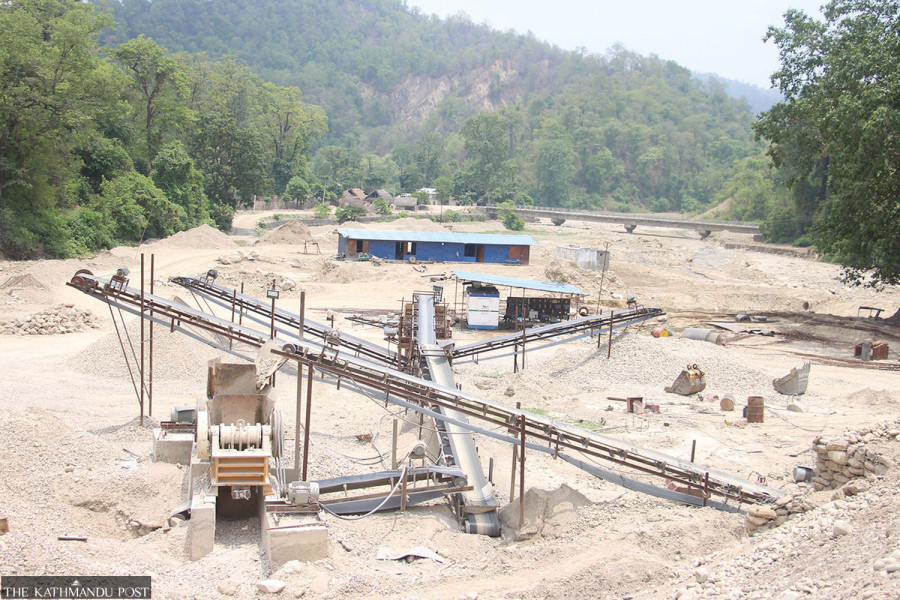National
Court halts enforcement of new rules on extraction of stones, sands and pebbles
A government move to ease extraction rules has drawn criticism for allowing crusher plants to come closer to forests, villages and rivers inviting environmental, health and landslides concerns.
Prithvi Man Shrestha
The Supreme Court on Wednesday issued an interim order to prevent the enforcement of new rules on the extraction, sale and management of stones, pebbles and sands that allow crusher plants to be set up closer to forests, villages and rivers.
A writ petition was registered at the Supreme Court on Monday, demanding scrapping of the new rules arguing they would contribute to environmental degradation, cause landslides and flooding, and affect the wildlife.
A single bench of justice Tanka Bahadur Moktan issued a short-term interim order issuing show cause notice to the government as well, according to the notice posted on the Supreme Court’s website.
“After issuing an interim order, the court has invited both sides for a hearing on June 29,” said Padam Bahadur Shrestha, an advocate and one of the three petitioners.
The new rule or “set of standards” has caused controversy because it reduced the distance between the crusher plants and forests, rivers, villages, high tension lines, archaeological and and cultural sites, particularly in the hilly region.
For example, the distance between a crusher plant and highways and river banks has been reduced to 200 metres in hill districts from 500 metres earlier for the entire country. The distance of 500 metres has been kept intact in the case of Tarai in the new set of standards.
Likewise, as per the new set of standards, crusher plants can be set up just 500 metres away from the forests, densely populated settlements, and religious, cultural and archaeological sites in hill districts. Such distance for crusher plants in the Tarai has been reduced to 500 metres from forests but one kilometre in the case of human settlements, religious, cultural and archaeological sites, as per the new set of standards.
The writ petitioners claimed that the immediate reduction in distance poses risk to these structures, human health, wildlife and their habitats. “There has been discrimination between people of the Tarai and hills in terms of envirnmental justice,” the writ petitions state.
Experts said that reduced distances would encourage mining and extraction of stones, pebbles and sands inviting risk of landslides and floods. They said that bringing crusher plants closer to human settlements could cause landslides putting entire settlements into risk zones.
Ram Bahadur Kunwar, spokesperson for the Department of Archaeology, told the Post on Monday that reducing the distance between crusher plants and archaeological sites could affect archaeological structures.
“If excavators need to be used for mining, the distance should at least be more than one or one-and-a-half kilometres between archaeological sites and construction sites. If the soil is not compact enough in the area, even a bigger distance should be maintained,” he said.
Talking to the Post earlier this week, stakeholders blamed the government for introducing the standards with relaxed provisions to serve the interests of certain groups. The government has, however, claimed that the move was taken to implement the standards more practical so that it could be implemented within a year.




 15.24°C Kathmandu
15.24°C Kathmandu








%20(1).jpg&w=300&height=200)





